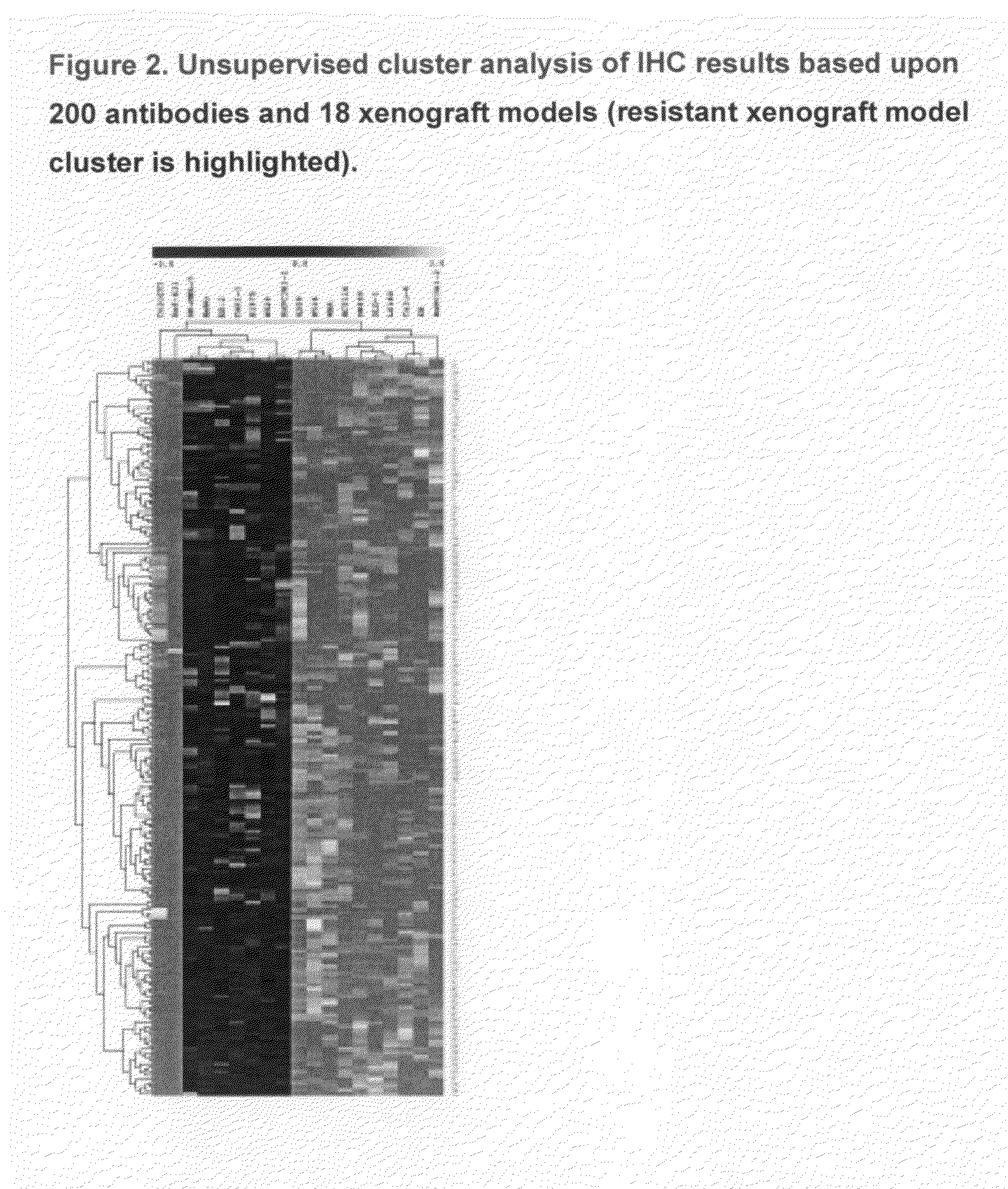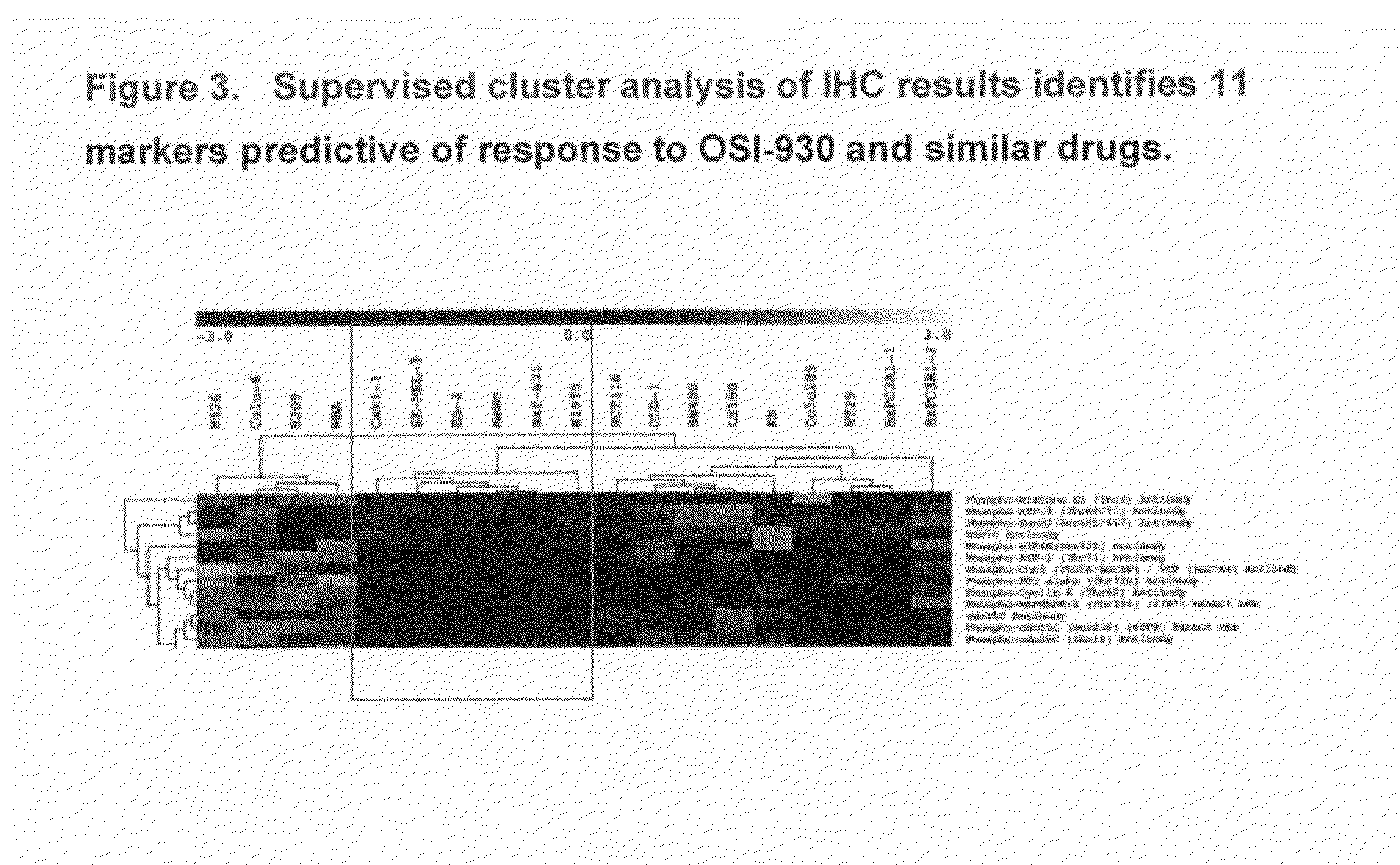Protein markers of responsiveness to type III receptor tyrosine kinase inhibitors
a technology of tyrosine kinase inhibitors and protein markers, applied in the field of cancer, can solve the problems of poor prognosis of epithelial tumors including breast, ovarian and endometrial cancer, and uncontrolled growth and proliferation of cells
- Summary
- Abstract
- Description
- Claims
- Application Information
AI Technical Summary
Benefits of technology
Problems solved by technology
Method used
Image
Examples
example 1
Identification of Protein Markers Correlated with Resistance or Responsiveness to a Type III RTK Inhibitor (OSI-930) in Human Tumor Xenografts
[0141]In order to identify predictive biomarkers for the type III RTK inhibitor OSI-930, IHC analysis of a set of xenograft models that have varying responses to the drug was conducted with a large set of carefully validated antibodies (200 total and phospho-antibodies). The approach was improved by the use of an automated imaging method that was more sensitive and quantitative than the traditional 0-3 scoring system of IHC results.
[0142]The cell lines used in the xenografts were from a variety of cancer types (18 models total—see FIG. 1). Five of these cell line models were resistant to the drug as shown by growth curves of the xenograrft tumor mass (data not shown) while the other seven were sensitive to the drug and showed significant inhibition of tumor growth. All xenograft samples were analyzed by IHC and given a score by the imaging pro...
example 2
IHC Identification of Mammalian Tumors Likely to be Resistant to a Type III RTK Inhibitor (OSI-930)
[0146]The success of therapeutics in medicine and especially in a complex disease such as cancer depends on the correct diagnosis choice of patients treated with the drug. This process requires knowledge of the specific patient markers that can be used to predict how the patient will respond to a given drug or class of drugs that share a common mechanism of action.
[0147]A mammalian tumor likely to be resistant to OSI-830 may be identified as follows. A diseased tissues sample is removed from the patient prior to treatment and analyzed by IHC analysis to characterize the protein expression levels or protein phosphorylation levels for up to 11 of the predictive markers described herein. The patient sample may consist of a tumor resection, tumor biopsy, tumor needle biopsy, fine needle aspirant, or other means of isolating cancerous cells for the patient. The samples may be analyzed by co...
PUM
| Property | Measurement | Unit |
|---|---|---|
| concentration | aaaaa | aaaaa |
| cancer drug resistance | aaaaa | aaaaa |
| resistance | aaaaa | aaaaa |
Abstract
Description
Claims
Application Information
 Login to View More
Login to View More - R&D
- Intellectual Property
- Life Sciences
- Materials
- Tech Scout
- Unparalleled Data Quality
- Higher Quality Content
- 60% Fewer Hallucinations
Browse by: Latest US Patents, China's latest patents, Technical Efficacy Thesaurus, Application Domain, Technology Topic, Popular Technical Reports.
© 2025 PatSnap. All rights reserved.Legal|Privacy policy|Modern Slavery Act Transparency Statement|Sitemap|About US| Contact US: help@patsnap.com



